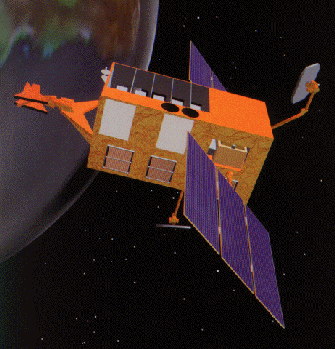Explanation: Launched Saturday on a Delta rocket, the X-ray Timing Explorer (XTE) will watch the sky for rapid changes in X-rays. XTE carries three separate X-ray telescopes. The Proportional Counter Array (PCA) and the High Energy X-ray Timing Experiment (HEXTE) will provide the best timing information in the widest X-ray energy range yet available. They will observe stellar systems that contain black holes, neutron stars, and white dwarfs as well as study the X-ray properties of the centers of active galaxies. XTE's All Sky Monitor (ASM) will scan the sky every 90 minutes to find new X-ray transients and track the variability of old ones. XTE has a planned life time of two years.
1999 2000 2001 2002 2003 2004 2005 2006 2007 2008 2009 2010 2011 2012 2013 2014 2015 2016 2017 2018 2019 2020 2021 2022 2023 2024 2025 |
Yanvar' Fevral' Mart Aprel' Mai Iyun' Iyul' Avgust Sentyabr' Oktyabr' Noyabr' Dekabr' |
NASA Web Site Statements, Warnings, and Disclaimers
NASA Official: Jay Norris. Specific rights apply.
A service of: LHEA at NASA / GSFC
& Michigan Tech. U.
|
Publikacii s klyuchevymi slovami:
rentgenovskie istochniki - rentgenovskie nablyudeniya - Rentgenovskii teleskop
Publikacii so slovami: rentgenovskie istochniki - rentgenovskie nablyudeniya - Rentgenovskii teleskop | |
Sm. takzhe:
Vse publikacii na tu zhe temu >> | |
